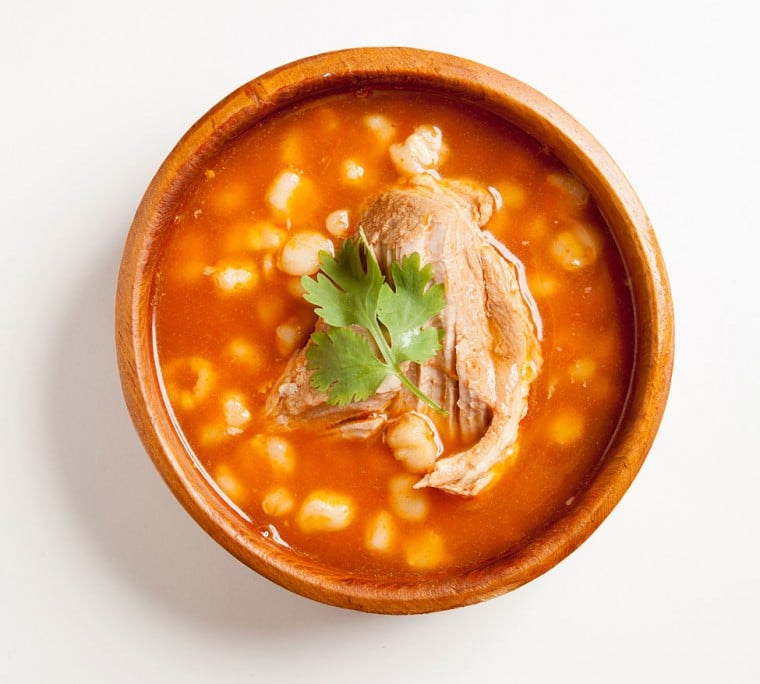
Image source: https://bloximages.newyork1.vip.townnews.com/feastmagazine.com/content/tncms/assets/v3/editorial/9/f4/9f46376a-c228-11e1-a019-0019bb30f31a/4fee0f506de91.image.jpg
Prior to modern transportation and communication, posole was often the dish eaten for survival. Even though it is little known, blue corn has 100% nutritionall the vitamins, minerals and essential amino acids for good health.
Posole is made from dried whole kernels of corn and is the Mother process for all corn in Mexican food products made from masa. The characteristic flavor of all native corn dishes made from whole or ground corn such as tortillas, tamales and tostados are made from posole. Posole is always the first process, the corn is first made into posole and then ground into masaground finely for tortillas and coarsely for tamales.
The ancients discovered that if they soaked the corn in a mixture of ground limestone and water and allowed it to soak for several days before draining it and drying it, that the corn was well preserved and would remain fresh tasting and vermin free for a few yearsoften up to seven years.
The ancients believed in the rule of seven--that every seven years, there is a great crop. They were taught that you cannot plan on having a great crop every year. So the bountiful crops had to be preserved. It was this necessity that created the evolution of posole. In New Mexico, it is too far north to easily get ground limestone, so they used ashes from wood fires to cover the corn for a week or so to "cure" the corn.
Posole has a lot going for it. If properly made, it is delicious and satisfying. Also, it is very economical. A pound of dried posole feeds 15 to 16 people as a main dish. With all these benefits, it is not surprising that it became the dish for celebrations or feasts to commemorate generally joyous occasions, such as weddings, births, corn and rain dances and so forth.
To cook posole, one important fact is that the posole is reconstituted by cooking it in water with no seasonings added. (Seasonings, especially salt, will inhibit the kernels from popping open and exposing the starchy, soft center.) The posole should be allowed to cook uncovered with frequent additions of water and only occasional stirring . Once the kernels have burst, it can be seasoned and finished or it can be stored for a few days before finishing. Or, it can be frozen for up to six months or it can be ground for the masa for tamales. (Most home grinders or food processors will not grind the cooked posole finely enough for tortillas.)
Following is my favorite recipe for Traditional Posole. Vegetarian, escabeche or pickled posole and many variations are possible.
POSOLE
Dried Corn with Pork and Red Chiles
You may serve this either as a side dish or main dish. I like to layer toppings such as fresh shredded cabbage, fresh lime juice and fresh chopped onion.
Yield: 15 to 16 servings
1 pound dried posole
1 quart water, or more
2 pounds pork, steak or roast, cut into " cubes
1 Tablespoon salt or to taste
2 garlic cloves, minced
pinch of Mexican oregano
1 Tablespoon cumin, or to taste
cup caribe chile or to taste
1.Simmer the posole in unseasoned water until it becomes soft and the kernels have burst open; it usually requires 1-1/2 to 2 hours.
2.Brown the pork in a cold, well-seasoned frying pan; adding no fat or oil to the pan. Saute until very browned, then add to the posole. Deglaze the frying pan with 1 cup water, stirring to loosen the brownies sticking to the pan. Also add to the posole.
3.Add remaining ingredients, using one-half the cumin and cook the stew for 1 or more hours, to blend the flavors. Just before serving, add the remaining half of cumin. Taste and adjust the seasonings. Ideally, this dish should be started the morning before it is to be served, to allow the flavors to develop.
